PMS Bazaar conducted another episode of the Sundaram Alternate Series. The discussion revolved around the topic “Managing Different Stakeholders in a Business.” To shed more light on this, Abhijit Bhave, MD & CEO, Equirus Wealth had an enlightening discussion with Vikaas M Sachdeva, Managing Director, and Arjun G Nagarajan, Chief Economist and Communication Manager – Investments, both from Sundaram Alternates.

The discussion covered the following points and here are the edited excerpts:
- Balancing stakeholder priorities
- Key to success in the workplace
- Employee-first approach and job-seeker guidance
- Stakeholder management insights
- Four E's, customer-centric approach, and leadership
Balancing Stakeholder Priorities for a Win-Win Scenario
The session began with Sachdeva inquiring about the primary stakeholders in a business, prompting Bhave to provide a comprehensive explanation. In his response, Bhave elaborated on the definition of stakeholders, including individuals, groups, or organisations with vested interests in business decisions. He listed key stakeholders such as employees, families, customers, investors, shareholders, partners, and the government. Upon Sachdeva's request to identify the top three stakeholders, Bhave highlighted the pivotal contributions of customers, shareholders, and employees.
Bhave responded to the query about achieving a win-win situation for all stakeholders by delving into the intricacies of balancing their priorities. He highlighted that finding a middle ground was essential, considering the diverse interests of customers, shareholders, and employees. Bhave acknowledged the prevalence of conflicts and to illustrate, he cited an example from the wealth management sector, where reconciling employee revenue targets with ensuring clients receive suitable products posed a challenge. He underscored the significance of aligning employee interests with the organisation, suggesting the use of ESOPs as a mechanism to strike a balance that benefits all stakeholders.
Sachdeva appreciated the helpful response and then veered the conversation towards understanding the differing priorities of each stakeholder. Bhave addressed this query by categorising stakeholder priorities into four E's for customers, two G's for shareholders, and three H's for employees. He explained that customer priorities, which include returns, service, ease of processes, and the right allocation based on risk profile.
For shareholders, Bhave emphasised the twin objectives of growth and governance, similar to a German car's brakes – designed for both speed and safety. Regarding employees, he listed high performance, continuous learning, and humility as key priorities. Acknowledging that conflicts are inevitable, especially between short-term and long-term goals, Bhave stressed the need for a strategic, long-term approach that benefits customers, shareholders, and employees.
Key to Success in the Workplace
Sachdeva raised a crucial question about the employee-organization dynamic, particularly emphasising the prevalent trend of frequent job changes among employees. Sachdeva specifically touched upon the belief in "employees first" and sought to explore whether employees also reciprocate this sentiment by putting the organisation first.
Sachdeva explored further into the factors influencing employee decisions to switch jobs, highlighting the abundance of opportunities and the often-cited monetary reasons. He considered this a vital inquiry for both recruiters and job seekers. Sachdeva asked a follow-up question, seeking Bhave's insights, on the factors employees should consider when evaluating a workplace. Along with the soft skills or factors employers should look for beyond the obvious job requirements.
Bhave believed that employees should be the company’s top priority, stating it as a personal philosophy. He explained that the right set of employees, armed with the right attitude, contribute to a positive cycle of success – from employees to customers and, consequently, to shareholders’ profits. Bhave then addressed the factors that employees should consider when evaluating a workplace, drawing from a study conducted by the Association of Professional Trainers in Singapore. He emphasised work culture, transparency, empathy, a long-term approach, rewards, career progression, organisational vision, and corporate governance as critical elements.
Sachdeva steered the conversation to explore what employers should look for in employees. He shared his belief in the importance of HR orientation for everyone in the industry, underscoring that being an HR-oriented person is crucial for growth. Bhave's use of acronyms resonated with him and Sachdeva summarised the core message – that everyone needs to be an HR-oriented person in the current era of social media and depersonalisation.
Bhave agreed with Sachdeva's emphasis on the significance of being an HR-oriented person. He further expanded on the factors employers should consider in employees, introducing the concept of "KASH" – Knowledge, Attitude, Skills, Habits, and Behaviour. While highlighting the importance of knowledge, he also stressed the value of training and experience. Notably, Bhave placed greater importance on the role of attitude over talent, echoing the sentiment that attitude is a key critical factor for success.
Employee-First Approach and Job Seeker Guidance
Following the discussion on the employee-first approach and its connection to customer-centric strategies, Bhave offered his perspective on wealth management. He argued that a successful strategy involves adopting an employee-first approach that ultimately leads to a customer-first mindset. He emphasised the role of relationship managers in taking a holistic view and positioning themselves as not just financial advisors but also as coaches guiding clients through life milestones. Bhave referenced Simon Sinek's "Start with Why" philosophy, emphasising the importance of understanding the client's motivations. He concluded by asserting that RM should refrain from selling anything they wouldn't buy for themselves or their loved ones.
Sachdeva introduced his acronym for assessing employees – the three E's: Energy, Enthusiasm, and Entrepreneurship. He noted the similarity to Jack Welch's four E's: Energy, Energize, Execution, and Edge.
Bhave offered advice to job seekers. He shared a motivational message emphasising that the current time is opportune for wealth management careers. He urged individuals to assess their work enjoyment, pride in their organisation, the quality of people around them, and personal and professional growth. Bhave introduced the concept of the "four questions" to evaluate one's fit within an organisation.
Stakeholder Management Insights: Learning, Relationships, and Individual Impact
Nagarajan then took his turn to ask Bhave about managing stakeholders in various organisations, seeking advice and examples. Bhave shared his diverse work experiences, emphasising the importance of failures as learning opportunities. He introduced the concept of give-to-receive in relationships and compared stakeholders to family members, suggesting a win-win approach. He highlighted the need for stakeholders to ask, "What can I do for you?" to build successful relationships.
Nagarajan picked up on the importance of systems in organisations and asked if Bhave considered systems crucial in the various organisations, he had worked in. Bhave disagreed with the idea that the system is paramount, asserting that individual behaviour within a system determines success or failure. He shared an anecdote about Dr PJ Nayak's advice, encouraging individuals to view themselves as the sun in their solar system, and taking responsibility for making other stakeholders revolve around them.
Four E's, Customer-Centric Approach, and Leadership in Stakeholder Management
Nagarajan inquired Bhave about the four E's he often mentions and whether they align with Jack Welch's concept of the four E's. He also asked about the importance of good leadership in resolving conflicts between stakeholders, seeking examples from the wealth management industry.
Bhave outlined his Four E's as Experience, Earnings, Exposure, and Education. These elements provide a comprehensive framework for evaluating various aspects, including the client's experience, financial earnings, exposure to risks, and educational aspects of financial decisions.
Customer-Centric Approach:
Nagarajan shared a fundamental principle from Sundaram, highlighting that employees should always remember that the customer pays their salary. This concept underscores the importance of keeping the customer at the centre of decision-making within the organisation.
Leadership and Stakeholder Management:
Bhave emphasised the role of effective leadership in resolving conflicts between stakeholders. He suggested that successful organisations in wealth management demonstrate strong leadership, focusing on customer interests and balancing the needs of all stakeholders. Organisations with a long-standing presence and assets under management exceeding a billion dollars were mentioned as examples of successful entities. The implication is that these organisations have likely demonstrated effective stakeholder management over time.
Simplicity in Communication:
Bhave stressed the importance of simplicity, especially in the complex world of wealth management. He mentioned using a pen and paper in client meetings, underlining the value of straightforward communication to ensure clients understand financial decisions.
Client Relationships and Stakeholder Balance:
Bhave discussed the significance of building strong relationships with clients. He suggested that organisations should aim not just for customer satisfaction but for creating fans – clients who are genuinely delighted with the services provided. Successful wealth management organisations were said to effectively balance the interests of various stakeholders, considering employees, customers, and shareholders.
While the above blog summarises the webinar discussions, you can watch the entire session with the appended link below.
Get access to rich data and analytics of PMS & AIF by subscribing to us. Join the 60000+ investors & experts now: Subscribe NOW
Recent Blogs
.jpg)
Passively Active Investing — A Modern Investor’s Lens on ETF-Based PMS
PMS Bazaar recently organized a webinar titled “Passively Active Investing — A Modern Investor’s Lens on ETF-Based PMS,” which featured Mr. Karan Bhatia, Co-Founder and Co-Fund Manager , Pricebridge Honeycomb ETF PMs. This blog covers the important points shared in this insightful webinar.
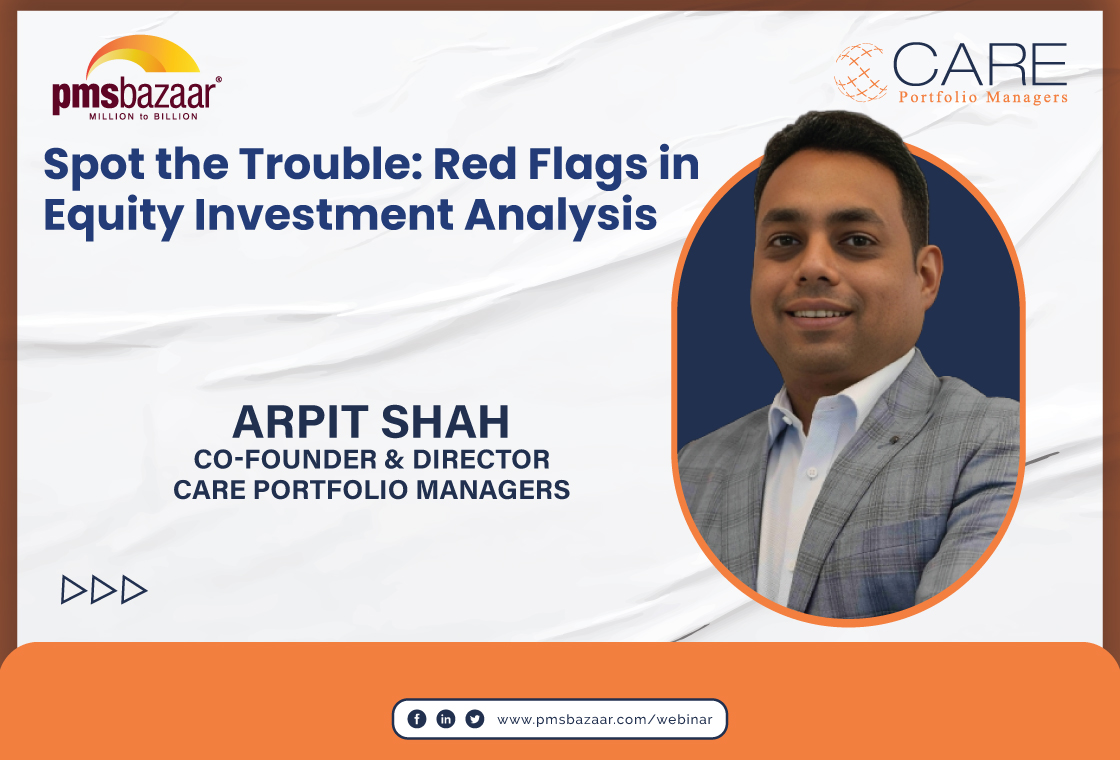
Spot the Trouble: Red Flags in Equity Investment Analysis
PMS Bazaar recently organized a webinar titled “Spot the Trouble: Red Flags in Equity Investment Analysis,” which featured Mr. Arpit Shah, Co-Founder & Director, Care Portfolio Managers. This blog covers the important points shared in this insightful webinar.

Long-Only AIFs Rebound Sharply in October; Long-Short Strategies Lag Despite Lower Volatility
106 long-only AIFs averaged 3.68% vs 32 long-short AIFs at 2.7%; only 24–31% of funds beat key indices

Markets log strongest monthly gains in 7 months; PMS performance turns near-uniform in October
Nifty 50 TRI gained 4.62%, BSE 500 TRI rose 4.27%; 415 of 427 equity PMSes ended positive
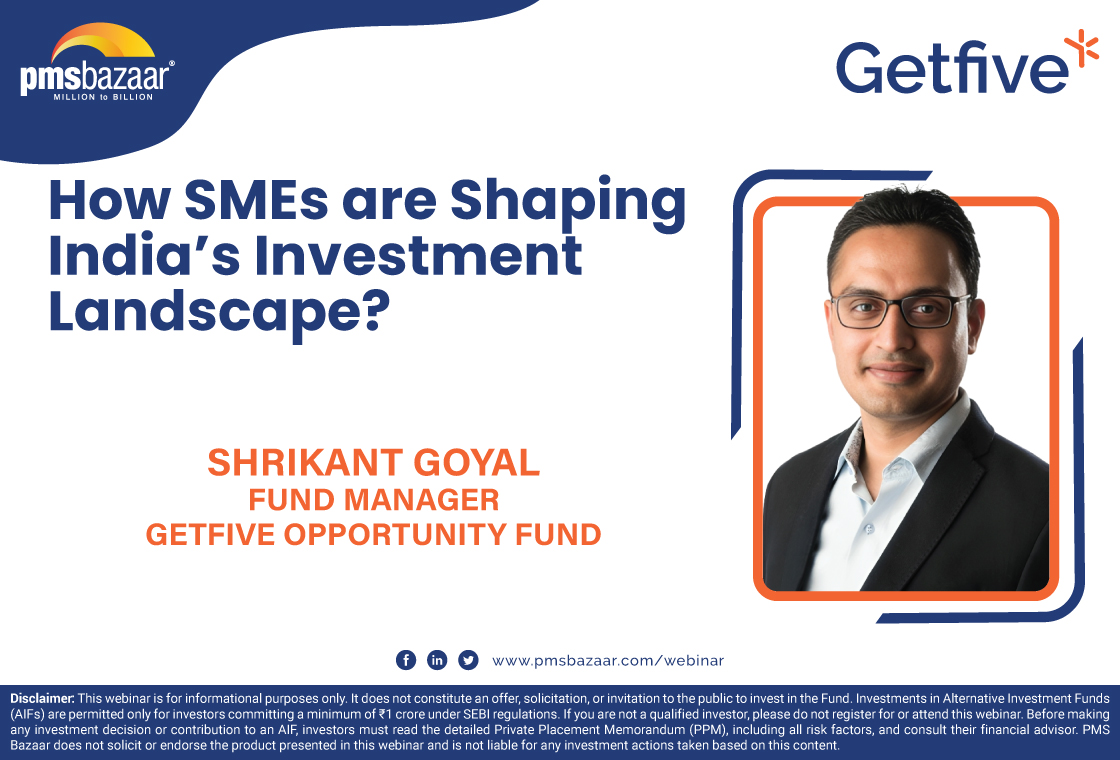
How SMEs are Shaping India’s Investment Landscape?
PMS Bazaar recently organized a webinar titled “How SMEs are Shaping India’s Investment Landscape?” which featured Mr. Shrikant Goyal, Fund Manager, GetFive Opportunity Fund.
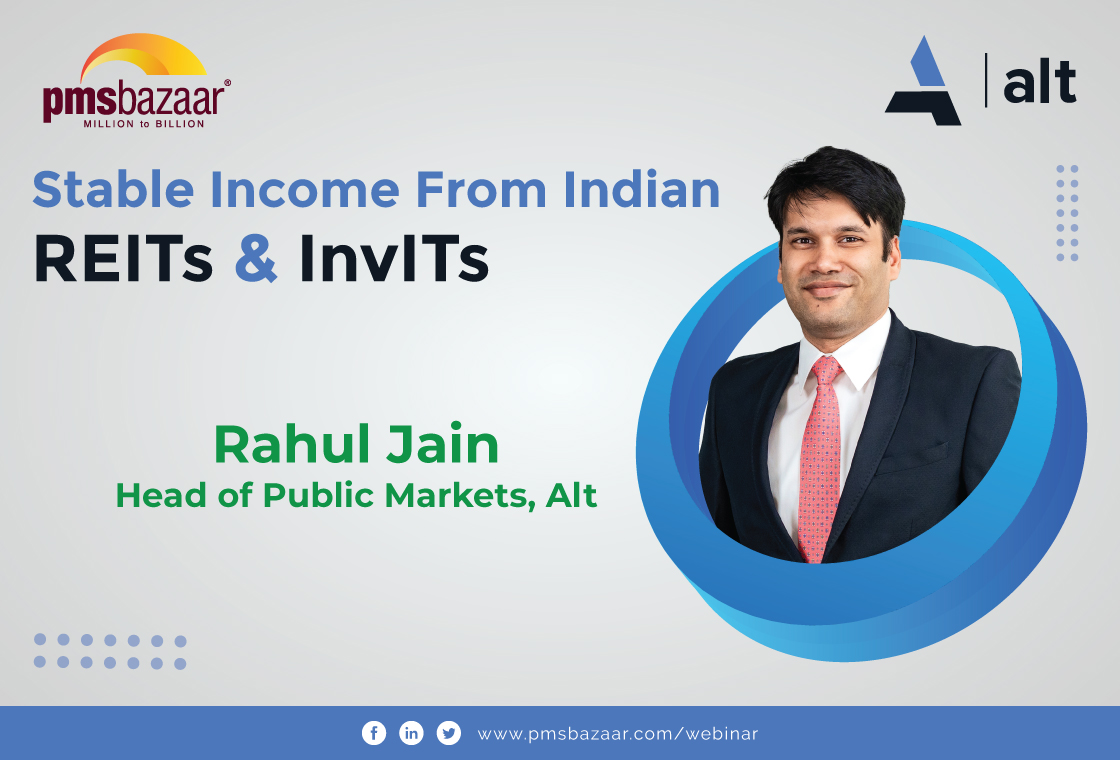
Stable Income from Indian REITs and InvITs
PMS Bazaar recently organized a webinar titled “Stable Income from Indian REITs and InvITs,” which featured Mr. Rahul Jain, Head of Public Markets, Alt.
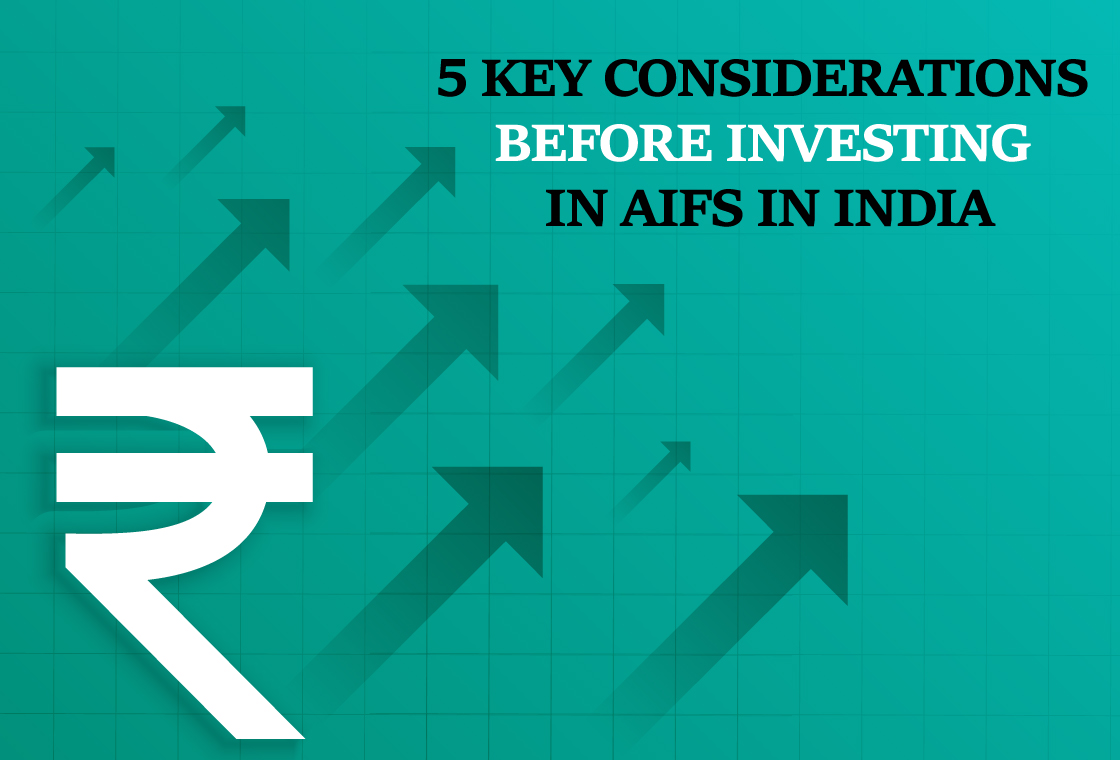
5 Key Considerations Before Investing in AIFs in India
Alternative Investment Funds (AIFs) have emerged as a compelling option for sophisticated investors seeking diversification and potentially superior returns. But venturing into AIFs requires a clear understanding of their unique characteristics that go beyond simply knowing what they are and their categories.
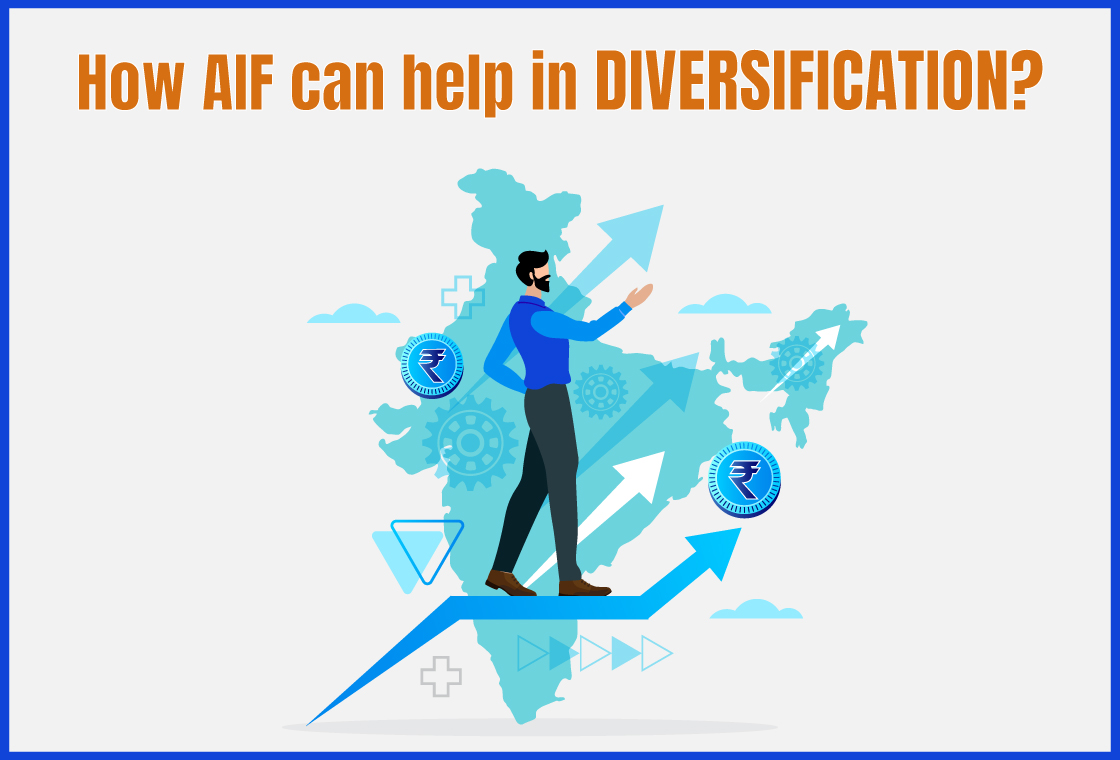
How AIF can help in diversification?
Traditionally, Indian investors have relied on a mix of stocks and bonds to build their wealth. While this approach offers diversification, it can still leave your portfolio vulnerable to market fluctuations. Enter Alternative Investment Funds (AIFs), a dynamic asset class gaining traction for its ability to unlock diversification beyond the realm of conventional options.

